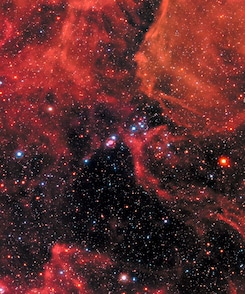Nasa Telescope
- All
- News
- Videos
- Web Stories
-

Nearby Super-Earth GJ 251 c Could Help Learn About Worlds That Once Supported Life, Astronomers Say
- Sunday November 16, 2025
- Written by Gadgets 360 Staff
Astronomers discovered GJ 251 c, a super-Earth 20 light-years away. Its location in the habitable zone and rocky composition make it a top candidate for future searches for life beyond our solar system. The team, led by Suvrath Mahadevan and Corey Beard, said this discovery provides a clock for one of the best candidates to search for life's atmo...
-
 www.gadgets360.com
www.gadgets360.com
-

Webb Finds Phosphorus-Bearing Gas in an Ancient Brown Dwarf
- Monday November 10, 2025
- Written by Gadgets 360 Staff
NASA’s James Webb Space Telescope has detected phosphine (PH₃) in the atmosphere of the ancient brown dwarf Wolf 1130C, about 54 light-years away in Cygnus. This marks the first confirmed detection of a phosphorus-bearing gas in such a metal-poor object. The finding surprises astronomers, as phosphine was previously undetected in similar brown ...
-
 www.gadgets360.com
www.gadgets360.com
-

NASA's James Webb Space Telescope Telescope Challenges Old Theories on Mini-Neptune Worlds
- Friday November 7, 2025
- Written by Gadgets 360 Staff
New models suggest mini-Neptunes—planets smaller than Neptune with thick gas envelopes—may have solid rocky surfaces instead of molten magma. Data from NASA’s JWST revealed high-pressure atmospheres capable of compressing molten rock into solid crusts. This discovery challenges earlier assumptions and offers key insights into exoplanet compos...
-
 www.gadgets360.com
www.gadgets360.com
-

NASA’s JWST Produces First-Ever 3D Map of Distant Planet WASP-18b
- Monday November 3, 2025
- Written by Gadgets 360 Staff
NASA’s James Webb Space Telescope has created the first-ever 3D atmospheric map of an exoplanet, revealing the extreme conditions on WASP-18b, an “ultra-hot Jupiter” located 400 light-years away. Using infrared eclipse mapping, scientists discovered a scorching hotspot over 2,700 °C where water molecules are breaking apart. This groundbreaki...
-
 www.gadgets360.com
www.gadgets360.com
-

New Images of Interstellar Object 3I/ATLAS Show a Giant Jet Shooting Toward the Sun
- Sunday October 26, 2025
- Written by Gadgets 360 Staff
New telescope images show interstellar comet 3I/ATLAS ejecting a giant jet of gas and dust toward the Sun. Scientists say the phenomenon confirms its natural cometary behaviour, offering clues about how such ancient interstellar visitors react to solar heat.
-
 www.gadgets360.com
www.gadgets360.com
-

Flattened Dark Matter May Explain Mysterious Gamma-Ray Glow at Milky Way’s Core, Study Finds
- Sunday October 26, 2025
- Written by Gadgets 360 Staff
Dark matter near the Milky Way’s center appears flattened, not spherical, according to new simulations. The discovery may explain a puzzling gamma-ray glow long observed by NASA’s Fermi telescope, reigniting theories that dark matter collisions produce high-energy radiation in the galaxy’s core
-
 www.gadgets360.com
www.gadgets360.com
-

NASA Telescopes Capture First-Ever Companion Star Orbiting Massive Red Supergiant Betelgeuse
- Sunday October 26, 2025
- Written by Gadgets 360 Staff
Astronomers have detected a small companion star orbiting the red supergiant Betelgeuse using Hubble and Chandra observations. Dubbed “Betelbuddy,” the discovery reveals an extreme binary system that challenges existing models of stellar evolution and may offer clues to Betelgeuse’s future.
-
 www.gadgets360.com
www.gadgets360.com
-

JWST Reveals Stunning New Details About M87’s Supermassive Black Hole Jet
- Saturday October 4, 2025
- Written by Gadgets 360 Staff
Recent images captured by the James Webb Space Telescope (JWST) are the clearest ever pictures of the jet arriving from the massive black hole in the galaxy named Messier 87 (M87). There are clear details in the image shot by the telescope, which show the change of brightness, shape and the jet that is usually in disguise. As per scientists, this d...
-
 www.gadgets360.com
www.gadgets360.com
-

NASA’s James Webb Telescope May Have Found First Black Hole Star, Known as ‘The Cliff’
- Thursday September 25, 2025
- Written by Gadgets 360 Staff
JWST detected “The Cliff,” a candidate black hole star with a black hole core wrapped in a luminous gas shell. This discovery offers insights into black hole formation, stellar evolution, and cosmic dynamics, prompting astronomers to search for similar objects across the universe.
-
 www.gadgets360.com
www.gadgets360.com
-

Tiny Red Dots Spotted By NASA’s James Webb Telescope Could Be Black Hole Stars
- Thursday September 25, 2025
- Written by Gadgets 360 Staff
NASA’s James Webb Space Telescope revealed mysterious “little red dots” that seem too bright and mature for their age. A new study suggests they may be black hole stars—giant hydrogen spheres powered by black holes—helping explain the rapid growth of early supermassive black holes.
-
 www.gadgets360.com
www.gadgets360.com
-

James Webb Space Telescope Spots Rare Protostar Blasting Twin Jets Across Milky Way
- Friday September 12, 2025
- Written by Gadgets 360 Staff
NASA’s James Webb Space Telescope has captured a rare protostar about ten times the Sun’s mass blasting twin jets nearly eight light-years long. The beams carve through the glowing Sharpless 2-284 nebula, offering astronomers a vivid glimpse into how massive stars form and shape their galactic environment.
-
 www.gadgets360.com
www.gadgets360.com
-

NASA Hubble Space Telescope Uncovers One of the Youngest Known Blue Straggler–White Dwarf Systems
- Thursday September 11, 2025
- Written by Gadgets 360 Staff
Italian astronomers using the Hubble Space Telescope have discovered a white dwarf orbiting a blue straggler star in the globular cluster 47 Tucanae, located 15,300 light-years away. The rare system, among the youngest detected, sheds light on stellar mass transfer and offers vital clues to the evolution of binary stars in dense clusters.
-
 www.gadgets360.com
www.gadgets360.com
-

NASA Detects Strange Gamma-Ray Burst That Defies 50 Years of Expectations
- Thursday September 11, 2025
- Written by Gadgets 360 Staff
Astronomers have spotted GRB 250702B, a gamma-ray burst that erupted several times over two days—something never seen before. Detected by NASA’s Fermi and China’s Einstein Probe, the event defies current models of collapsing stars or black holes, hinting at an entirely new cosmic phenomenon.
-
 www.gadgets360.com
www.gadgets360.com
-

NASA's James Webb Space Telescope Captures Lobster Nebula’s Towering Spires and Massive Stars
- Monday September 8, 2025
- Written by Gadgets 360 Staff
NASA’s Webb Telescope imaged the Lobster Nebula (NGC 6357), 5,500 light-years away. Its young star cluster, Pismis 24, contains giant stars carving glowing gas pillars. Pismis 24-1, once thought to be one supermassive star, is a triple system with stars up to 74 times the Sun’s mass.
-
 www.gadgets360.com
www.gadgets360.com
-

James Webb Spots Bizarre Planet-Forming Disk Full of Carbon Dioxide
- Friday September 5, 2025
- Written by Gadgets 360 Staff
The James Webb Space Telescope has spotted a bizarre planet-forming disk dominated by carbon dioxide where water is almost absent. This rare finding, in star system XUE 10 within NGC 6357, challenges current models of planetary formation and may reshape our understanding of habitable worlds.
-
 www.gadgets360.com
www.gadgets360.com
-

Nearby Super-Earth GJ 251 c Could Help Learn About Worlds That Once Supported Life, Astronomers Say
- Sunday November 16, 2025
- Written by Gadgets 360 Staff
Astronomers discovered GJ 251 c, a super-Earth 20 light-years away. Its location in the habitable zone and rocky composition make it a top candidate for future searches for life beyond our solar system. The team, led by Suvrath Mahadevan and Corey Beard, said this discovery provides a clock for one of the best candidates to search for life's atmo...
-
 www.gadgets360.com
www.gadgets360.com
-

Webb Finds Phosphorus-Bearing Gas in an Ancient Brown Dwarf
- Monday November 10, 2025
- Written by Gadgets 360 Staff
NASA’s James Webb Space Telescope has detected phosphine (PH₃) in the atmosphere of the ancient brown dwarf Wolf 1130C, about 54 light-years away in Cygnus. This marks the first confirmed detection of a phosphorus-bearing gas in such a metal-poor object. The finding surprises astronomers, as phosphine was previously undetected in similar brown ...
-
 www.gadgets360.com
www.gadgets360.com
-

NASA's James Webb Space Telescope Telescope Challenges Old Theories on Mini-Neptune Worlds
- Friday November 7, 2025
- Written by Gadgets 360 Staff
New models suggest mini-Neptunes—planets smaller than Neptune with thick gas envelopes—may have solid rocky surfaces instead of molten magma. Data from NASA’s JWST revealed high-pressure atmospheres capable of compressing molten rock into solid crusts. This discovery challenges earlier assumptions and offers key insights into exoplanet compos...
-
 www.gadgets360.com
www.gadgets360.com
-

NASA’s JWST Produces First-Ever 3D Map of Distant Planet WASP-18b
- Monday November 3, 2025
- Written by Gadgets 360 Staff
NASA’s James Webb Space Telescope has created the first-ever 3D atmospheric map of an exoplanet, revealing the extreme conditions on WASP-18b, an “ultra-hot Jupiter” located 400 light-years away. Using infrared eclipse mapping, scientists discovered a scorching hotspot over 2,700 °C where water molecules are breaking apart. This groundbreaki...
-
 www.gadgets360.com
www.gadgets360.com
-

New Images of Interstellar Object 3I/ATLAS Show a Giant Jet Shooting Toward the Sun
- Sunday October 26, 2025
- Written by Gadgets 360 Staff
New telescope images show interstellar comet 3I/ATLAS ejecting a giant jet of gas and dust toward the Sun. Scientists say the phenomenon confirms its natural cometary behaviour, offering clues about how such ancient interstellar visitors react to solar heat.
-
 www.gadgets360.com
www.gadgets360.com
-

Flattened Dark Matter May Explain Mysterious Gamma-Ray Glow at Milky Way’s Core, Study Finds
- Sunday October 26, 2025
- Written by Gadgets 360 Staff
Dark matter near the Milky Way’s center appears flattened, not spherical, according to new simulations. The discovery may explain a puzzling gamma-ray glow long observed by NASA’s Fermi telescope, reigniting theories that dark matter collisions produce high-energy radiation in the galaxy’s core
-
 www.gadgets360.com
www.gadgets360.com
-

NASA Telescopes Capture First-Ever Companion Star Orbiting Massive Red Supergiant Betelgeuse
- Sunday October 26, 2025
- Written by Gadgets 360 Staff
Astronomers have detected a small companion star orbiting the red supergiant Betelgeuse using Hubble and Chandra observations. Dubbed “Betelbuddy,” the discovery reveals an extreme binary system that challenges existing models of stellar evolution and may offer clues to Betelgeuse’s future.
-
 www.gadgets360.com
www.gadgets360.com
-

JWST Reveals Stunning New Details About M87’s Supermassive Black Hole Jet
- Saturday October 4, 2025
- Written by Gadgets 360 Staff
Recent images captured by the James Webb Space Telescope (JWST) are the clearest ever pictures of the jet arriving from the massive black hole in the galaxy named Messier 87 (M87). There are clear details in the image shot by the telescope, which show the change of brightness, shape and the jet that is usually in disguise. As per scientists, this d...
-
 www.gadgets360.com
www.gadgets360.com
-

NASA’s James Webb Telescope May Have Found First Black Hole Star, Known as ‘The Cliff’
- Thursday September 25, 2025
- Written by Gadgets 360 Staff
JWST detected “The Cliff,” a candidate black hole star with a black hole core wrapped in a luminous gas shell. This discovery offers insights into black hole formation, stellar evolution, and cosmic dynamics, prompting astronomers to search for similar objects across the universe.
-
 www.gadgets360.com
www.gadgets360.com
-

Tiny Red Dots Spotted By NASA’s James Webb Telescope Could Be Black Hole Stars
- Thursday September 25, 2025
- Written by Gadgets 360 Staff
NASA’s James Webb Space Telescope revealed mysterious “little red dots” that seem too bright and mature for their age. A new study suggests they may be black hole stars—giant hydrogen spheres powered by black holes—helping explain the rapid growth of early supermassive black holes.
-
 www.gadgets360.com
www.gadgets360.com
-

James Webb Space Telescope Spots Rare Protostar Blasting Twin Jets Across Milky Way
- Friday September 12, 2025
- Written by Gadgets 360 Staff
NASA’s James Webb Space Telescope has captured a rare protostar about ten times the Sun’s mass blasting twin jets nearly eight light-years long. The beams carve through the glowing Sharpless 2-284 nebula, offering astronomers a vivid glimpse into how massive stars form and shape their galactic environment.
-
 www.gadgets360.com
www.gadgets360.com
-

NASA Hubble Space Telescope Uncovers One of the Youngest Known Blue Straggler–White Dwarf Systems
- Thursday September 11, 2025
- Written by Gadgets 360 Staff
Italian astronomers using the Hubble Space Telescope have discovered a white dwarf orbiting a blue straggler star in the globular cluster 47 Tucanae, located 15,300 light-years away. The rare system, among the youngest detected, sheds light on stellar mass transfer and offers vital clues to the evolution of binary stars in dense clusters.
-
 www.gadgets360.com
www.gadgets360.com
-

NASA Detects Strange Gamma-Ray Burst That Defies 50 Years of Expectations
- Thursday September 11, 2025
- Written by Gadgets 360 Staff
Astronomers have spotted GRB 250702B, a gamma-ray burst that erupted several times over two days—something never seen before. Detected by NASA’s Fermi and China’s Einstein Probe, the event defies current models of collapsing stars or black holes, hinting at an entirely new cosmic phenomenon.
-
 www.gadgets360.com
www.gadgets360.com
-

NASA's James Webb Space Telescope Captures Lobster Nebula’s Towering Spires and Massive Stars
- Monday September 8, 2025
- Written by Gadgets 360 Staff
NASA’s Webb Telescope imaged the Lobster Nebula (NGC 6357), 5,500 light-years away. Its young star cluster, Pismis 24, contains giant stars carving glowing gas pillars. Pismis 24-1, once thought to be one supermassive star, is a triple system with stars up to 74 times the Sun’s mass.
-
 www.gadgets360.com
www.gadgets360.com
-

James Webb Spots Bizarre Planet-Forming Disk Full of Carbon Dioxide
- Friday September 5, 2025
- Written by Gadgets 360 Staff
The James Webb Space Telescope has spotted a bizarre planet-forming disk dominated by carbon dioxide where water is almost absent. This rare finding, in star system XUE 10 within NGC 6357, challenges current models of planetary formation and may reshape our understanding of habitable worlds.
-
 www.gadgets360.com
www.gadgets360.com






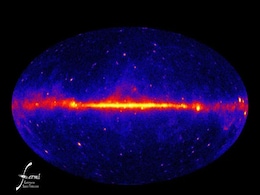
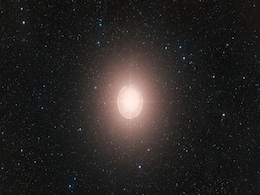
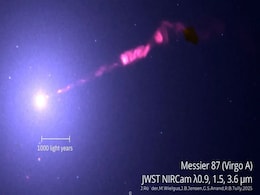
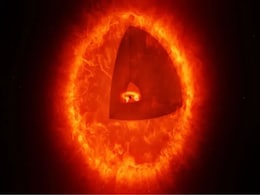
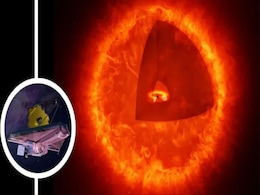
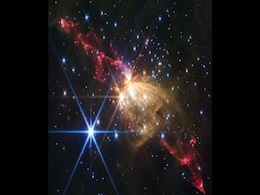
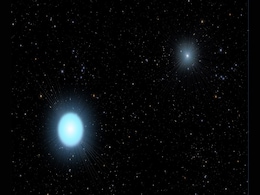
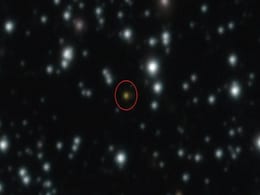
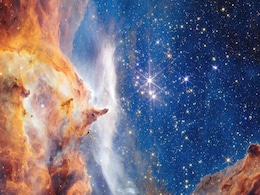

![Gadgets 360 With Technical Guruji: Did You Know? [April 6, 2024] Gadgets 360 With Technical Guruji: Did You Know? [April 6, 2024]](https://c.ndtvimg.com/2024-02/mpconh58_did-you-know_640x480_10_February_24.jpg?downsize=245:163)







